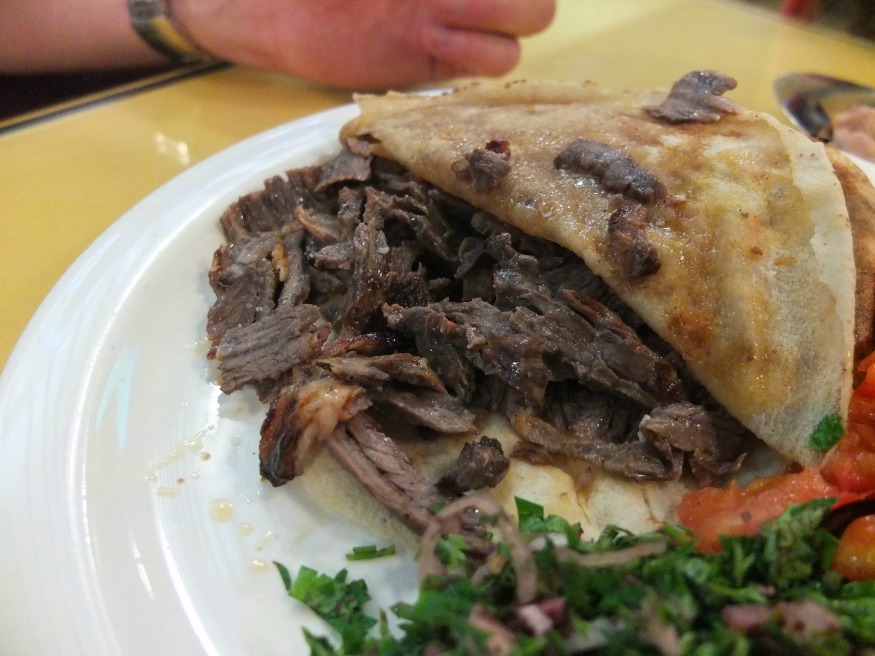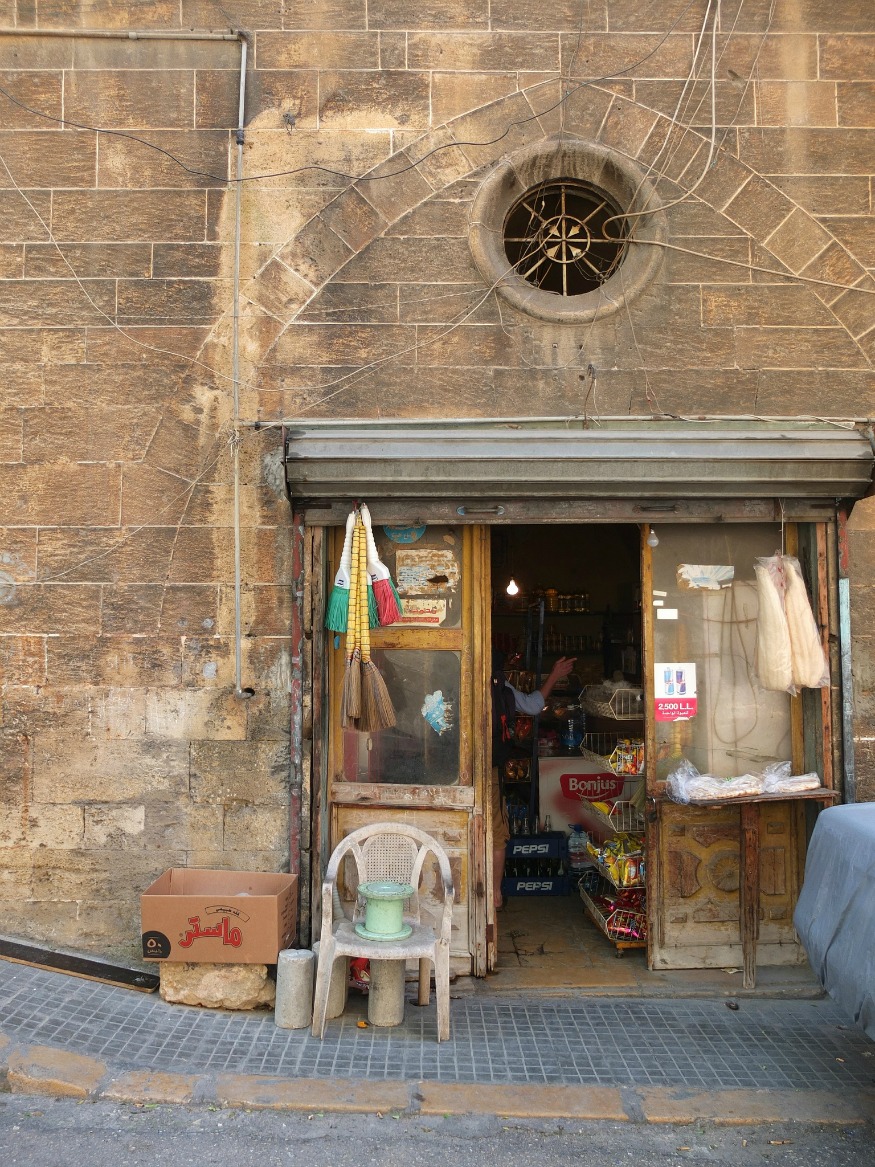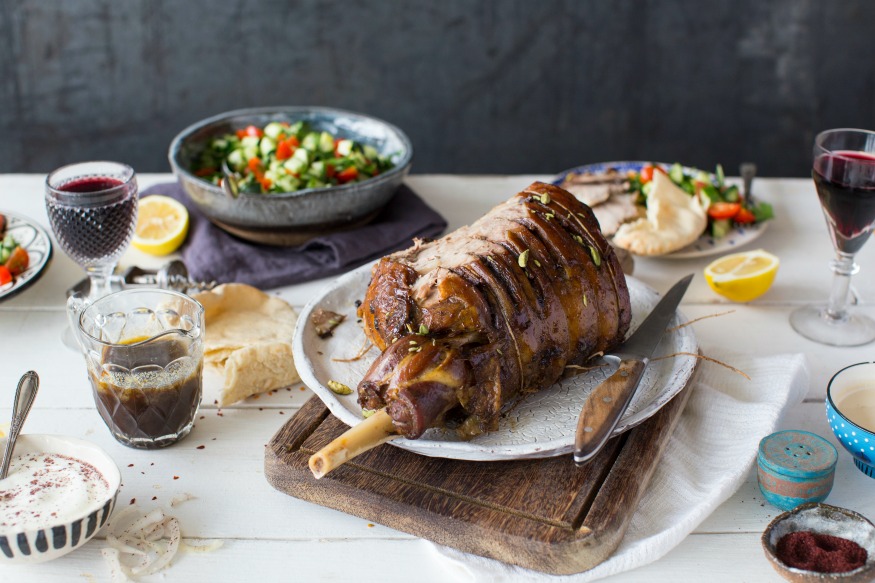Shawarma Spiced Lamb
This post is part of some work I did with Leisure range cookers. I cooked the shawarma spiced lamb at a Guardian reader event and now I’m posting it here so you guys can make it too. I was their ‘meat representative’. You can find out more about the campaign here. Photo: Uyen Luu for The Guardian.
We are lost in Beirut. Again. It’s after dark and we trudge dusty back streets stopping occasionally to ask for help. No one knows where anything is, let alone the shawarma bar I’ve had a tip-off about. It is stressful. In the background, cars scream along the main road, honking horns echoing in the underpass. I’m sure we hear a crash in the distance.
We carry on pacing the stony ground, our feet filthy now in flip flops, noses clogged with grime. The heat is sticky and all we can think about is driblets of condensation running down beer bottles, the overwhelming relief of a rattling fan on a clammy brow, and the promise that is a plate of the finest shawarma.
In Lebanon, lamb pieces are stacked on the spit and basted in the animal’s own fat. The sheep in that part of the world have fatty tail cushions, full of precious gold which can be secured to the top of the spit, held in place with a cut lemon. As the spit rotates the fat melts down the sides, adding flavour. The real prizes are to be found at the bottom of course, where scraps of meat and vegetables lay, sucking up the fallout.

Eventually, we find the restaurant, which is unexpectedly large. Two spits creak lazily in front of vertically stacked coals but beyond, it’s a vast, strip-lit cavern. A few patrons sit at the plastic tables watching sport on flickering screens and I think that perhaps this place isn’t so different to Camberwell Church Street at 2am, after all.
And then we taste. A shaven pile of spice-scented lamb arrives on a no-nonsense metal tray, steaming underneath floppy flatbread. As we lift cautiously and peek underneath, a puff of steam rises, full with cloves, cumin, cinnamon. We alternate with mouthfuls of salad, heavy with parsley and sumac, our fifth or maybe seventh meal of the day – the perils of being a food obsessive in a foreign land.

It’s also possible to get a taste of Lebanon at home, of course, which is why I’ve adapted the recipe in a very free and easy way (read: not at all authentic), for the home cook. It’s a bit of mixing, rubbing and then bunging in the oven for a lot of hours. It comes out very tender so you can pull it apart and eat with flatbreads, tahini sauce and an onion salad with sumac.
What I think is great about this recipe is that the spices really penetrate the meat, and regular basting keeps it moist, so you can have a little taste of Lebanon, even in the absence of a spit in your kitchen and fatty tail cushions on your sheep.
Shawarma Spiced Lamb
This will serve six easily. Don’t worry that the recipe looks long, there’s not really much effort involved.
1 x 2.5kg bone-in leg of lamb
For the shawarma spice mix
1.5 tablespoons cumin seeds
2 teaspoons black peppercorns
1 teaspoon coriander seeds
1 teaspoon fennel seeds
½ teaspoon fenugreek seeds
5 cloves
½ cinnamon stick
3 cardamom pods
1 tablespoon paprika
1 tablespoon sea salt (such as Maldon)
For the marinade and cooking the lamb
5 cloves garlic, crushed
Zest of 1 unwaxed lemon, in thick strips (remove any white pith from the underside of the strips)
2 onions, sliced
100ml flavourless oil, such groundnut
Using a dry, heavy-based frying pan, toast the cumin seeds, peppercorns, coriander seeds, fennel seeds, fenugreek seeds, cloves, cinnamon stick and cardamom pods over a low heat. Move them around the pan on a medium heat for a few minutes, until they become very fragrant. Remove from the heat and grind to a powder in a spice grinder, then mix in the paprika and salt.
Combine the spice mix with the oil and garlic. Score the leg of lamb a few times on top to allow the marinade to penetrate, then smear the marinade all over the lamb, making sure to push it right into the slashes you’ve made, covering every nook and cranny.
Leave to marinate for at least four hours, or overnight.
Bring the meat out of the fridge an hour before you want to cook it, then preheat the oven to 200C/Gas Mark 6/180 fan assisted.
Place the lamb in a roasting dish and cook for 1 hour, uncovered, until the lamb has browned.
After this time, reduce the heat to 160C/Gas Mark 3. Add the onions and lemon zest strips and water to a depth of 1cm in the base of the pan. Cover with foil and cook for 4.5 -5 hours, until the lamb is very tender. Baste the lamb with the water in the pan every hour, topping up as necessary to make sure it doesn’t dry out. Don’t skip the basting as it will keep the lamb tender.
Allow the lamb to rest for 15 minutes before carving.
Serve the lamb with the salads and sauce, plus pitta or flatbreads, pickled chillies and/or pickled turnips and yoghurt.
For the Israeli salad
3 small Israeli cucumbers or 1 large English cucumber (seeds removed if the latter), diced
3 tomatoes, diced, or 15 cherry tomatoes, diced
1 handful parsley leaves, finely chopped
1 small handful mint leaves, finely chopped
2 tablespoons lemon juice
1 tablespoon olive oil
Mix all the ingredients together and season with salt and pepper. If made more than 15 minutes in advance the salad will accumulate juice at the bottom of the bowl – it is up to you whether you drain this off.
For the onion salad
2 regular onions, thinly sliced
1 heaped teaspoon sumac
1 teaspoon salt
In a bowl, mix the onions and salt, rubbing the salt into the slices with your hands. Add the sumac. Allow to sit for 5 minutes before serving.
For the tahini sauce
100ml tahini
50ml lemon juice
100ml water
1 small clove garlic, crushed
Salt (a pinch)
Put all the ingredients except the salt in a food processor and process until smooth Taste and add salt if needed.
